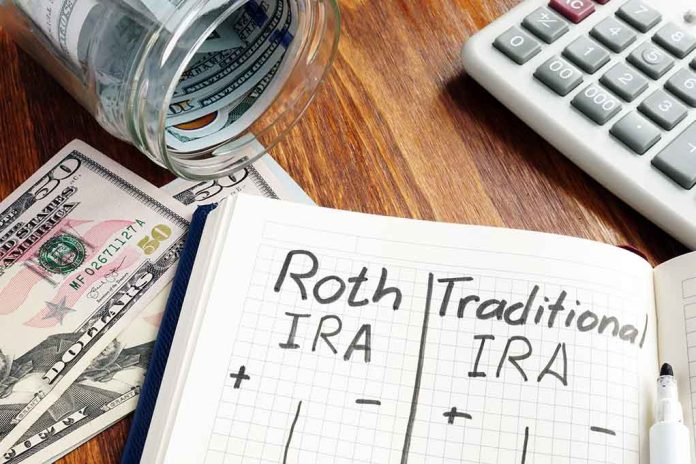
(DailyDig.com) – Planning for retirement isn’t easy when the IRS keeps moving the goalposts. The latest move, the Secure Act 2.0, changes the age when you must start taking distributions from any non-Roth retirement plan. In one way this makes a lot of sense—according to the CDC, life expectancy in the US has increased from 72.6 years in the mid-1970s, when IRAs were first introduced, to 76.4 years in 2021. The new ruling requires you to start withdrawals at 73 for 2023, and at 75 in 2033.
At first glance, this seems like a benefit for retirees who don’t rely on that income. The longer you can delay withdrawals, the longer your investments have to grow and increase in value. If your IRA is part of your estate planning, these extra years mean a greater inheritance for your kids and grandkids.
The Downside to Delaying IRA Distributions
The issue here is that delaying distributions can have serious negative implications across the board—from your income tax bracket to your Medicare premiums.
If the idea of your IRA chugging along tax-free for another couple of years appeals to you, consider this. Required minimum distributions (RMDs) are calculated by the IRS. The number is based on an actuarial table that divides your account’s year-end value by your remaining life expectancy. It’s simple math that your life expectancy decreases every year, as your IRA balance increases.
So that bundle you’re accumulating over a few years is going to cost you more in taxes when you start taking the RMDs. In some cases, these larger amounts will bump you to a higher tax bracket. Okay, you’re thinking, I can handle going from the 22% to the 24% bracket. But the downstream consequences are even greater.
Your Medicare Part B premiums are based on your income. If your RMD boosts your income from $113,000 to $123,000, your monthly premium jumps $100 per month. It will also add about $30 to your part D prescription premium.
Heir Necessities
Finally, the new rules stipulate that any heirs over 18 must drain an inherited IRA within 10 years—further increasing their cumulative tax burdens.
Alternatives to Delaying IRA Distributions
Fortunately, there are options when it comes to managing your RMDs.
Roth Conversion
For many retirees, converting a traditional IRA to a Roth IRA is the best way to take the RMD and keep your taxes low. When you roll cash (you can’t open a Roth with anything else) into a Roth, that contribution gets to grow tax-free. As long as the account has been open for at least five years, any distributions you take after you’re 59 1/2 are tax-free. You do pay taxes on the money when you open the account, but that’s it. Another advantage to a Roth is that there are no RMDs during your lifetime.
Convert to an Annuity
Another option is to move the money to an annuity. You don’t have to initiate payments on an annuity until you’re 85. You’ll need to work with your financial advisor to pick the annuity, which should be a Qualified Longevity Annuity Contract (QLAC). This income is taxable, but you can defer it until you’re 85. The maximum annuity you can put into a QLAC is $135,000.
Donate to Charity
If you are in a position to do so, you can reduce your taxes by giving to an eligible charitable organization. Qualified charitable contributions count as part of an RMD. If your IRA custodian directly makes the contribution to the non-profit on your behalf, you can donate up to $100,000 per year tax-free. One caveat—you can’t double dip and claim the donation on your income taxes.
Copyright 2023, DailyDig.com













